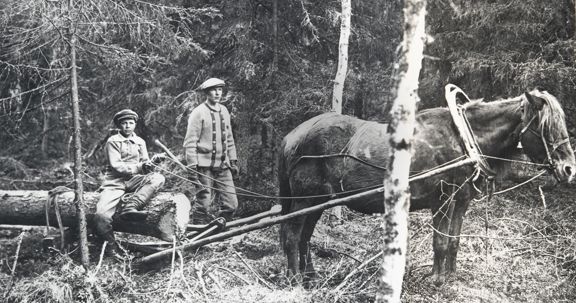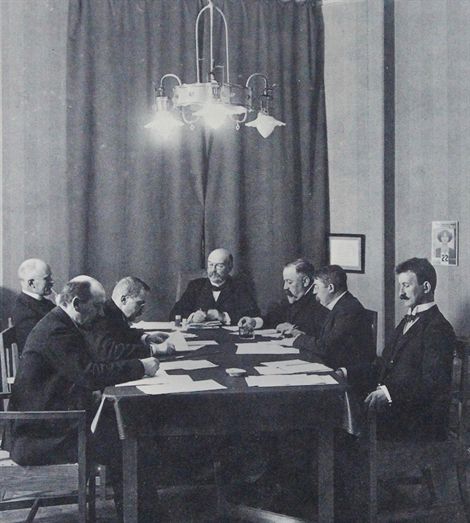History
The story of Sampo began in 1909. This brief history of Sampo encapsulates all of the relevant milestones of Sampo Group - from the early years prior to Finland’s independence right through to the present day.

Initially based in the city of Turku, Sampo started to branch out into the countryside as it developed new insurance products. Towards the end of the decade, Finland was faced with civil war and an urgent shortage of food products.

Sampo’s organizing committee meeting at the Turku office in 1911.
09:30 AM – 04:00 PM
The official working hours of Sampo employees in 1913, which included a refreshment break during the day.
In spite of its local Turku-based image, the company kept a keen eye on the entire country right from the very beginning. To depict the times, word-of-mouth marketing was handled during one winter by a salesman who travelled with a carriage from town to town in search of new clients.
The early part of the decade saw an economic boom. Timber exports reached an all-time high in 1914 and the same year saw Sampo create the first forest insurance cover in the Finnish market. The company was also engaged in developing other new insurance policies. Meanwhile, some new ideas, such as insurance to cover hailstorms and the expropriation of domestic animals, were left on the drawing board.
Sampo was keeping busy in terms of new business development. In 1912, the company put in place a full-time CEO position. Previously, decisions had been taken by the Board of Directors. The headquarters were modernized with a telephone system and an electronic calculator. However, not everything old goes out with the new: The head of fire claims maintained his reputation for having very quick abacus fingers.
The First World War understandably disrupted the economic upturn. Finland plummeted into crisis in the fall of 1917 and the nation was hampered with inflation, unemployment and a food shortage. In the following year, the Red Guards occupied Turku and business in the city came to a halt. Sampo employees tried to keep going even as the paramilitary Red Guards confiscated machines and at times monitored the daily functions in the offices.
During the post-war famine, Sampo secured the working capabilities of its employees by renting a farm in nearby Vehmaa for the summer of 1918. A distribution center was set up at the headquarters where the wives of Sampo directors handed out food and produce from the farm to employees.